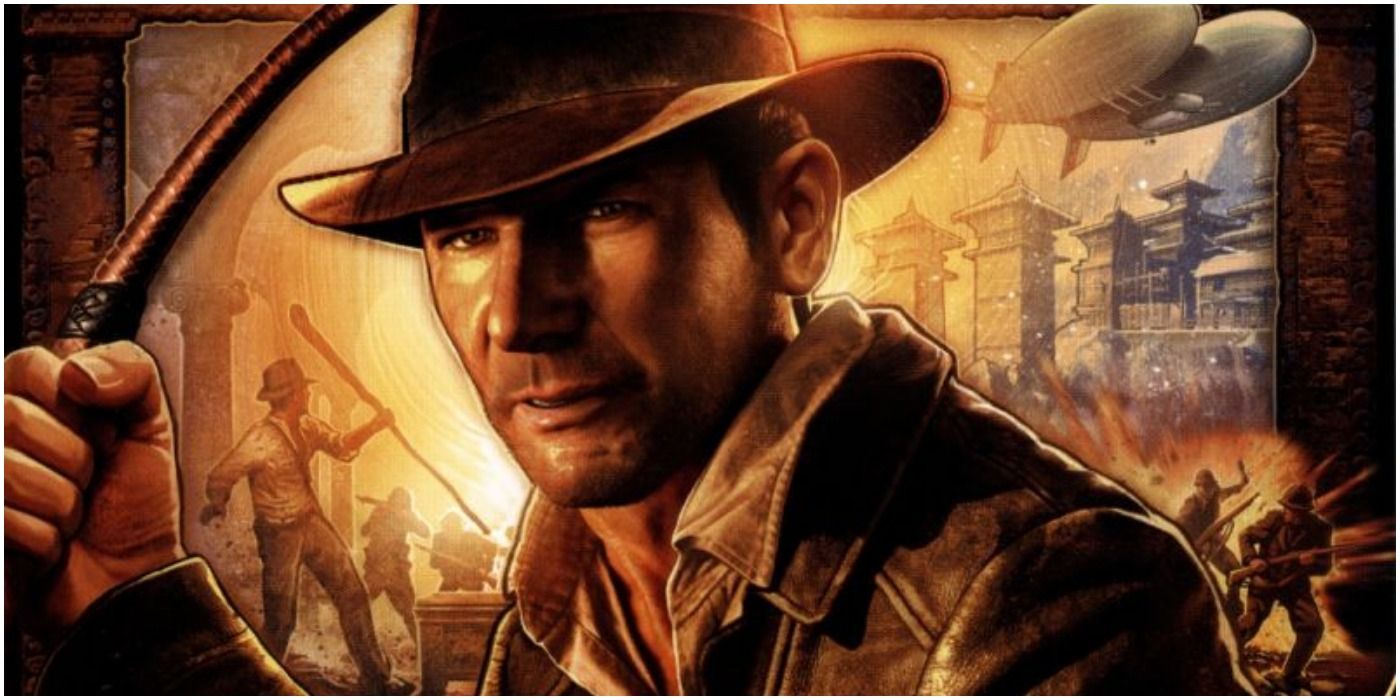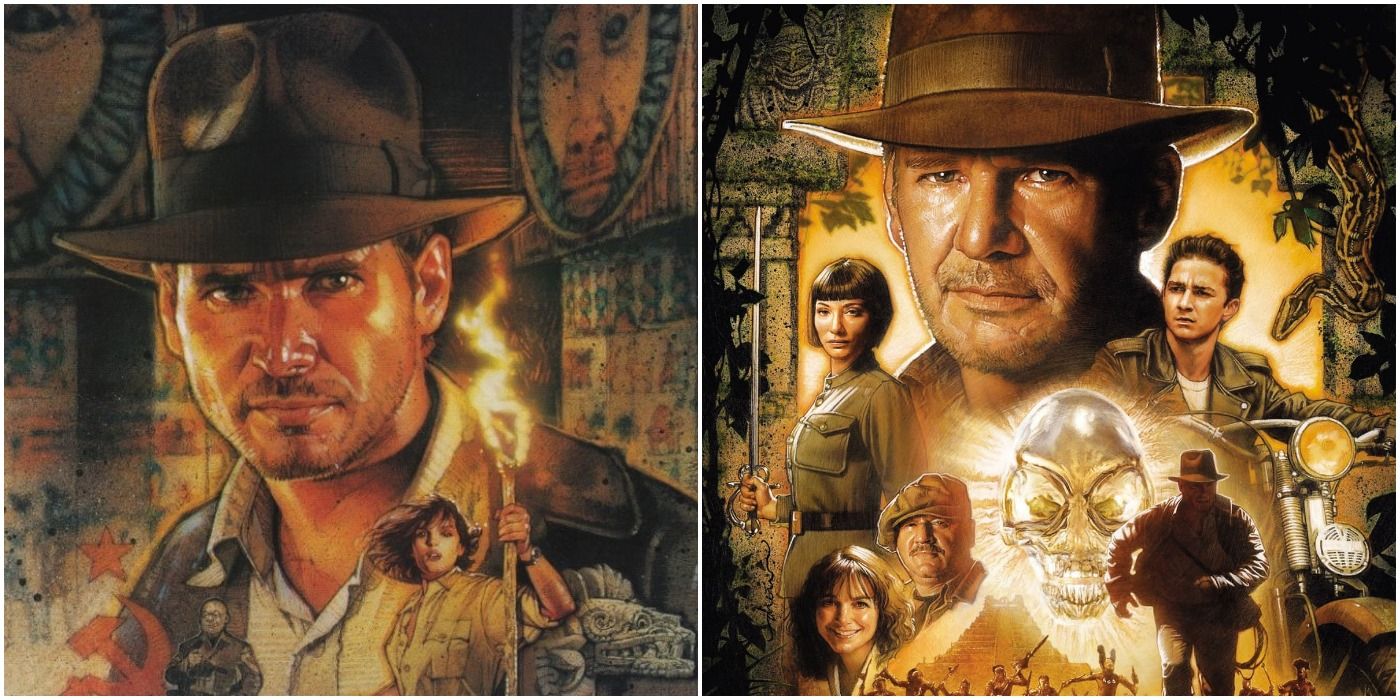10 Awesome Facts About Indiana Jones & The Fate Of Atlantis You Didn't Know
With Indiana Jones 5 in production at Lucasfilm supposedly set for a release in 2022 and with a brand new Indiana Jones videogame in development under Wolfenstein reboot developer MachineGames, it's a great time to be an Indiana Jones fan. With two new Indy stories on their way, it's also a good time to look back at the best story in the series that's not a movie—the adventure game Indiana Jones and the Fate of Atlantis.
Developed by LucasArts and released in 1992, the game sees Jones and his old flame Sophia Hapgood race across the world to discover the location and secrets of Atlantis before the Nazis do. Nearly 30 years after its release, there are still plenty of facts about the game fans may have forgotten.
10 There Are Three Different Paths To Play

Unlike other adventure games, Fate of Atlantis takes an almost RPG-like approach, as it boasts three completely separate gameplay paths that totally change how the game is played. The "Team" path has Indy and Sophia Hapgood work together to solve problems. "Wits" features Indy on his own to non-violently work out the puzzles in the game in a more traditional adventure game style. Finally, "Fists" has puzzles, but most situations can instead be solved by fights and action sequences. All three paths boast unique scenes and dialogue and are essentially three different games.
9 There's Another Fate Of Atlantis Videogame

When fans refer to Indiana Jones and the Fate of Atlantis, they're referring to the adventure game. There was actually a second Fate of Atlantis game released around the same time, subtitled The Action Game. It's an isometric title where, as Indiana Jones or Sophia Hapgood, the player fights through several levels based on the adventure game, although it starts with a casino, which wasn't in that title. The Action Game is generally regarded as vastly inferior to the original Fate of Atlantis, which is why few people have heard of it.
8 It Was Supposed To Have Two Direct Sequels

After the release of Fate of Atlantis, it was obvious to LucasArts that the game was a big hit. Work immediately began on another Indiana Jones title in the same style, again using the studio's SCUMM engine. Indiana Jones & The Iron Phoenix was its title, which dealt with Jones and the Nazis hunting for the life-giving Philosopher's Stone.
Work was cut short when German publishers informed LucasArts that the deep Nazism connection in the game, which went far deeper than Fate of Atlantis, meant the game couldn't be sold in Germany, the world's biggest adventure game market, so it was stopped. LucasArts tried to push the work to a smaller studio for Indiana Jones & The Spear of Destiny, but that proved too much for that developer and was canceled, as well.
7 It Was Originally Based On A Failed Monkey King Script

The original script for Indiana Jones & The Last Crusade was written by Home Alone/Harry Potter director Chris Columbus and was wildly different from the final film, dealing with the ancient Chinese myth of the Monkey King and his garden of immortality-granting peaches.
It was deemed too outlandish and was rejected. LucasArts initially picked the script up for its new adventure game, but game director Hal Barwood agreed with Steven Spielberg and George Lucas and also rejected it, choosing to craft a hunt for the fabled city of Atlantis, instead.
6 The Comic Adaptation Had Cut Scenes

Throughout the 90s, Dark Horse Comics held the rights to create original adventures based on Indiana Jones. Several of the stories they created were based on existing ideas, including a full adaptation of Indiana Jones & The Fate of Atlantis.
However, the four-part comic was based on an early script for the game, meaning that several ideas and scenes that got cut out appear in the comic. These scenes include Indy teaching a class at Barnett College, a visit to a museum in Leningrad, and Jones getting attacked in a New York hospital.
5 Sam & Max Creator And Pixar Director Steve Purcell Played Indy

Voice actor Doug Lee played Indiana Jones in both the CD-Rom version of Fate of Atlantis and its eventual 3D sequel, Indiana Jones & The Infernal Machine. However, Fate of Atlantis also employed rotoscope technology, an early form of motion capture where real actors are filmed and then animated.
It was the first game at LucasArts to use rotoscoping. Animator and Sam & Max: Freelance Police creator Steve Purcell performed Indiana Jones, and his wife Collette Michaud played Sophia. Purcell now works at Pixar, where he co-directed and wrote Brave.
4 It's Only One Of Two LucasArts Adventures Where The Player Can Die (The Other Is Also Indy)

The legendary LucasArts series of adventure games, which includes such titles as The Secret of Monkey Island, Day of the Tentacle, and Grim Fandango, were built on the premise that they're more thoughtful games that shouldn't pressure their audience. Consequently, the player cannot die in most LucasArts adventures.
The two Indiana Jones titles, Last Crusade (based on the movie) and Fate of Atlantis, are the only exceptions, as the franchise is built upon exciting set-pieces which would be very dull to play if there was no threat to the player.
3 Director Hal Barwood Is Close Friends With Spielberg And Lucas

The game director of both Fate of Atlantis and its sequel Infernal Machine, Hal Barwood, was chosen to head what was essentially the fourth and fifth Indiana Jones adventure due to his close friendship with Indy's creators Steven Spielberg and George Lucas.
Barwood went to school with Lucas, for who he worked on his pre-Star Wars science fiction title THX 1138 as an animator. He then helped write the final draft of Spielberg's Close Encounters of the Third Kind, in which he actually cameoed as a World War Two pilot. He brought his writing expertise to Indiana Jones in the 90s.
2 It's Only Been Released On Consoles Once, As A Bonus

Indiana Jones & The Fate of Atlantis has long been held as an all-time classic, so it's bizarre to note that it's entirely a PC-only game, for the most part. While fellow LucasArts adventures such as Full Throttle, Monkey Island, and Grim Fandango have received console ports, Fate of Atlantis is still bound to PC.
There was supposed to be a Sega CD port, but that was canceled, and, currently, the game's only console release is on the Nintendo Wii, as it was a pack-in bonus with Indy's most recent original adventure, Indiana Jones & The Staff of Kings.
1 Infernal Machine Has Many Elements Reused In Kingdom Of The Crystal Skull

After seven years of waiting, Fate of Atlantis fans were finally treated to Indy's next adventure from the same development team, and it was a wildly different game. Indiana Jones & The Infernal Machine was more of a 3D adventure in the style of Tomb Raider. However, interestingly, many of the game's themes are similar to the Kingdom of the Crystal Skull movie despite the two being a decade apart.
Both are set post-WW2, and the Soviets replace the Nazis as antagonists. Both have supposedly psychic women with a bob haircut. Both feature a temple in Mexico with a false god, and the game's titular machine, also based around teleportation to another dimension, is basically identical to the movie's finale, just without the flying saucer.
from ScreenRant - Feed https://ift.tt/3o0oh8j
No comments